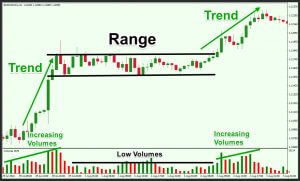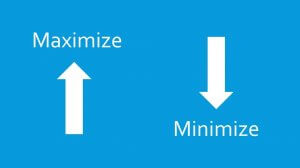A price gap can offer attractive trading opportunities, both up and down. What are the gaps and how are they traded? Today we will discuss trading with market gaps.
A gap is simply a level at which the price of a share or any other financial instrument moves strongly upward or downward, leaving a visible space on the price chart that denotes the lack of continuity in quotations. These moments can be used to trade with market gaps. A price gap can be observed in all types of periods, but operators usually focus on daily price charts.
“A gap occurs when news generates a strong wave of purchases or sales at a time when the market is not trading or liquidity is low.”
Price gaps are a strong driver for quotes and can occur for a variety of reasons. In general, a gap occurs when news generates a strong wave of purchases or sales at a time when the market is not operating or liquidity is low. In this way, a large number of purchase or sale orders produce a substantial movement in quotes.
Economic indicators or the political news of the day often generate price gaps in the main market indices. In the case of individual actions, performance reports, or important announcements – for example, approval of a key drug for a biotechnology business – are factors that usually impact on quotes and can generate price gaps.
In recent years with the online trading boom and high-frequency trading algorithms, it can be seen that the flow of orders in the markets is becoming faster and faster. This can speed up price movements and generate more gaps in both directions. This is perfect for trading with market gaps.
Some trading algorithms analyze the current order flow and tend to buy when the rest of the market buys and sells when the rest of the market also sells. There are also algorithms that analyze news headlines, for example, to quickly detect if a results report was above or below forecasts. In general, these algorithms accentuate price trends and tend to favour the creation of gaps in quotes. This is why trading with market gaps is increasingly common.
“Trading with market gaps is becoming more common.”
By way of illustration, we can see in the Facebook price chart (FB) a downward price gap recorded in July last year. Subsequently, the chart also offers an upward gap in quotes at the end of January 2019. In both cases, price gaps were due to market reaction following Facebook’s profit reports.
As for the relationship between the opening price and the previous day’s price, we can differentiate four different types of gaps:
- An bullish full gap occurs when the opening price is higher than the maximum price of the previous day.
- A bullish partial gap occurs when today’s opening price is higher than yesterday’s closing price, but not higher than yesterday’s maximum price.
- A bearish full gap occurs when the opening price is lower than the minimum price of the previous day.
- A bearish partial gap occurs when today’s opening price is lower than yesterday’s closing price, although it is not lower than yesterday’s minimum quotes.
“The greater the volume of quotes with which the gap occurs, the greater its relevance for operators.”
A full gap, whether bullish or bearish, is generally more important in terms of its significance on price trend than a partial gap. In addition, the higher the volume of quotations with which the gap is produced, the greater is also its relevance for operators.
How to trade with market gaps?
When operating with a price gap, it is important to analyze this gap within the general context of the price trend in the asset in order to position ourselves in an intelligent way.
“In a continuity behavior, prices move in the same direction as the gap in the medium term, while in a reversal scenario they move in the opposite direction.”
In the short term, it can happen that the price shows continuity or reversion behavior after a gap. In a continuity behavior, prices move in the same direction as the gap in the medium term, while in a reversal scenario they move in the opposite direction. It is vital to determine whether we are in a gap of continuity or reversal when trading with market gaps.
It is said that a gap is being filled when after showing the gap the price tends to cover the space that was uncovered. Once the gap began to fill, it is likely that the price will continue in that direction until it is fully filled, as there are no levels of support or resistance that can stop price movements within the gap. This is a way to trade with market gaps.
A typical case of reversal is exhaustion gaps. These occur when the market price has incorporated the news over time, and the gap marks a final boost before the trend change.
Suppose a company is experiencing difficulties and this negatively affects the course of business. In this context, prices are falling. Subsequently, the results report a bearish gap that marks exhaustion in the selling pressure. From there the trend begins to change, as sales orders reached a limit.
On the other hand, a gap in continuity can occur for example if the market expected good news – prices were rising – and business numbers exceeded even the most optimistic expectations. In this case, the results report adds more fuel to the bullish price movement, and a gap can anticipate explosive movements in quotes.






